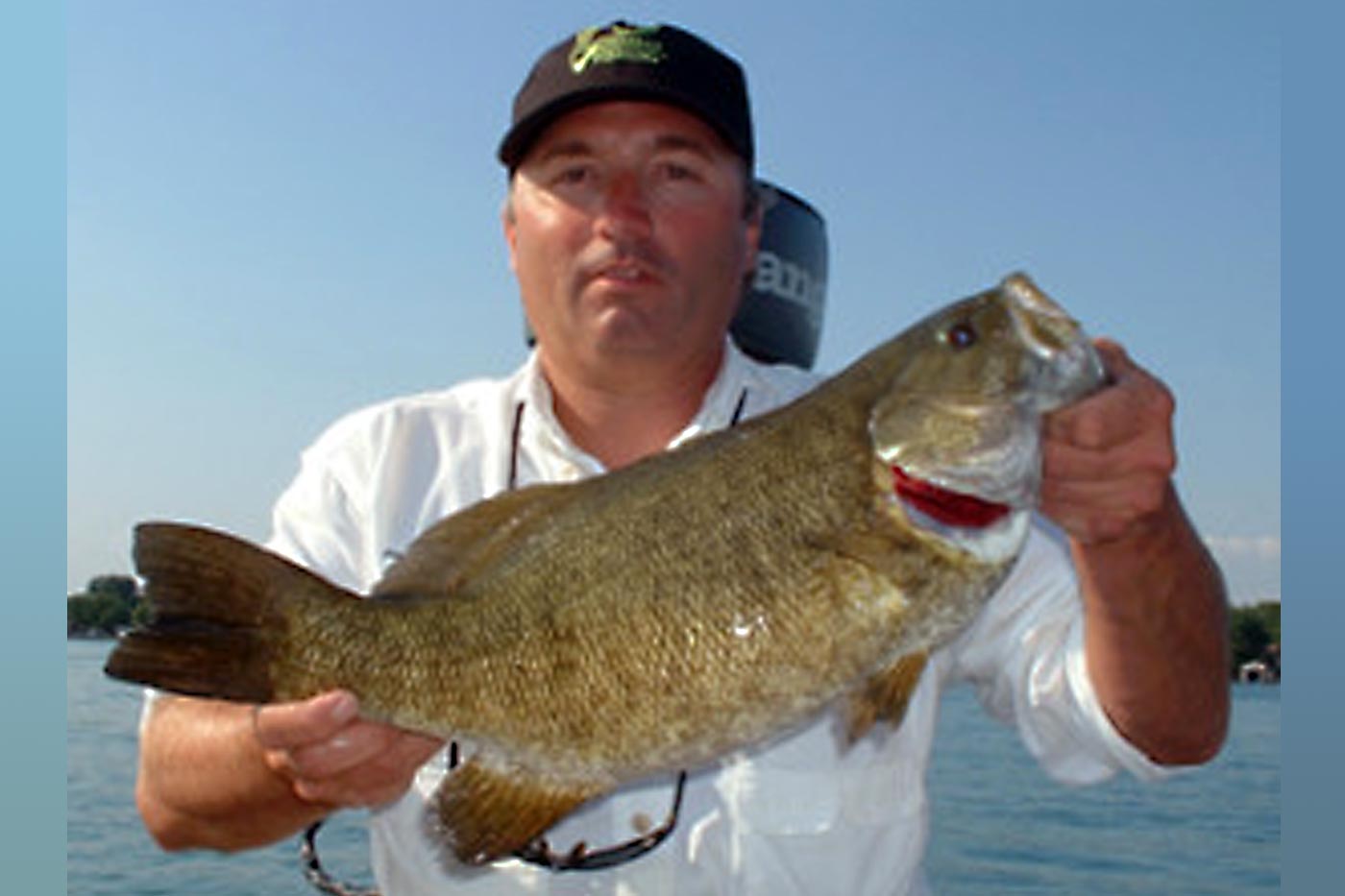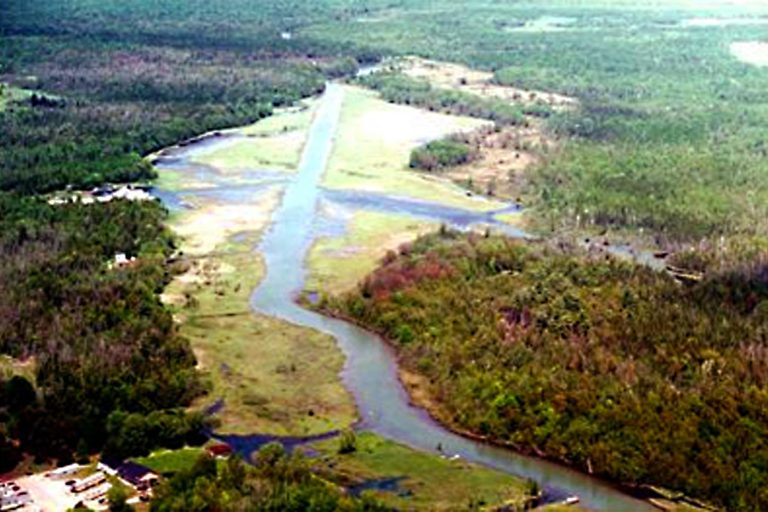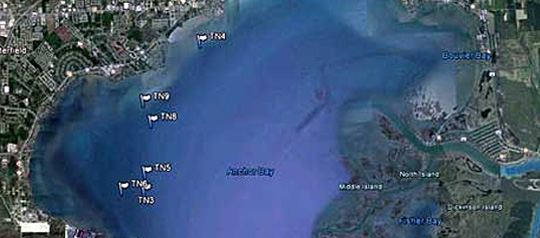How Productive Spots Are Found
For the last 16 years, my job has been to find spots on Lake St. Clair to document for smallmouth anglers. In spite of all my efforts to do so, I can unequivocally say that we are just scratching the surface on what is available in this fishery. Even after an explosion of bass fishing interest on Lake St. Clair over the last decade anglers still tend to fish the most obvious spots. These spots consist of classic drop offs, flats, rock features and current features or where others have seen boats fishing. Most other spots fished are typically a spinoff of the community areas with the exception going to anglers who have the time to hunt down new water.
The advent of side scan technology for anglers has been a significant boon for locating new spots. The amount of information they provide can overwhelm the time that most anglers have available to process it though. Most anglers want to just go out and have a productive fishing day on the water, so the data they collect is simply a means to an end. They get in an area that should have bass, use the side scan to locate structure features and fish them. In the end they may catch a few more bass but finding the structure does not make catching automatic.
In spite of this additional information, the process of evaluating an area doesn’t change. It takes time to go through each spot in an area to test the smallmouth bite. Even having done that, there are other factors like seasonal timing, migration patterns, annual feeding patterns, and macro and micro weather patterns that determine the bass holding strength of a spot.
What If We Knew Everything?
If every spot that held smallmouth bass were known, the strength of each spot would still be subject to environmental, biological and seasonal weather patterns. Some years the heaviest concentration of smallmouth show up on the South Shore, other years farther north and in others, more to the west.
When we have a hot summer, smallies tend to concentrate more on spots while during cooler years they roam around. Some years the strongest smallmouth bite is on the bottom and in other years they feed up off of the bottom. You also have wide fluctuations in the density and type of weed growth, algae blooms, higher or lower water levels and other elements that can move bass around.
If you were to do the impossible and locate every smallmouth and their location in a given year, there is no guarantee that you could apply that information to any other year. A one-foot rise or fall in the water levels alone will redistribute the bass populations. Let’s take the statistic that Lake St. Clair has a surface area of 430 square miles (Wikipedia). Let’s say that we then experience at least a one-foot increase in depth. The bass now have a much larger amount of water to occupy over what they had before the rise in water levels. At the very least, in the short term, this would redistribute the populations in such a way that the catch rate should drop. Long term, the populations should increase to compensate for the availability of new habitat.
Even professional anglers such as guides and dedicated tournament anglers only see part of the big picture. They can draw a great deal of success from understanding patterns that work in select areas at certain times of the year but what about the thousands of other areas in the Lake? Even in their success there is no guarantee that they have figured out the optimum artificial bait and presentation to catch the bass that are available. All we know for sure from their efforts is that there are good numbers of bass in select areas.
Forage
Bass also feed differently from year-to-year. We know this through anecdotal information gathered about the types of artificial baits that are most effective. When gobies exploded onto the scene, they became a major food source and the bite on artificials placed on the bottom was strong. In the last couple of years we have seen a changeover to less of a bite on the bottom and more so on suspending baits. This is further supported by the way smallmouth spit up alewife or young gizzard shad on to the deck of the boat when caught.
What We Are Experiencing This Year
A rapid rise in water levels is a game changer. On one hand, it brings spots into play that we haven’t been able to fish or even navigate in years. On the other hand, many traditional spots that we have developed during the low water years are no longer viable. Smallmouth are making new choices as to where they prefer to be.
During the years when the water levels were falling, we saw bass hold on to some shallower spots longer than we would have expected them to. In that case, the transition to new structure was a slow one, but a transition was eventually made. We have seen at least two years of rising levels, and a transition is due.
From a fishing perspective, it can take time to adjust. Many “community holes” are big areas where smallmouth school up and it can take a dedicated effort over several days to locate these schools. If you are fishing “spots” it can take days to find out how the smallies have repositioned themselves across the board. Are they relating to sand/weed combination structure more, or to rock/sand combination structure? What is their new preferred depth? Most anglers do not have the kind of time to work out these patterns, therefore, their perception is that the fishing is bad.
Perception And Reality
If you go back about 20 years the method of drifting and dragging the bottom in the area that we call the Mile Roads was a popular technique. Anglers of any skill level could put good numbers of bass in the boat this way. There came a period where the weed growth in the Mile Roads area covered most of the bottom and the drift and drag technique was taken out of play. During that period, anglers were constantly talking about how fishing was dead on Lake St. Clair.
Also during that period there were a couple of anglers who continued to do well here. The difference was that they had a higher skill set and adapted their techniques to match the change in the bottom. After that the zebra mussels showed up, cleared out much of the weed growth, made it possible for anyone to drift and drag again and suddenly Lake St. Clair wasn’t “dead” anymore.
In reality the bass were always around, only the cover had changed.
Bass By The Numbers
Hard data for smallmouth bass is scarce and what is collected is subject to narrow applications. If there is any single source of reliable hard data, it would come from competitive bass fishing events. They make an effort to collect accurate weight data and the sheer number of events held provides us with a solid look at the state of the fishery from year-to-year. In these numbers, we have seen fluctuations from one season to the next but over the last decade or so we have seen a steady increase in the quality of the catch. That is our best gauge of the status of the fishery, and now it is up to us to go find them!
This article was written in August 2015.

by: Capt. Wayne Carpenter
Great Lakes Captain / Bass Fishing Guide





